Research
The main research lines of Nonlinear Solid Mechanics Group
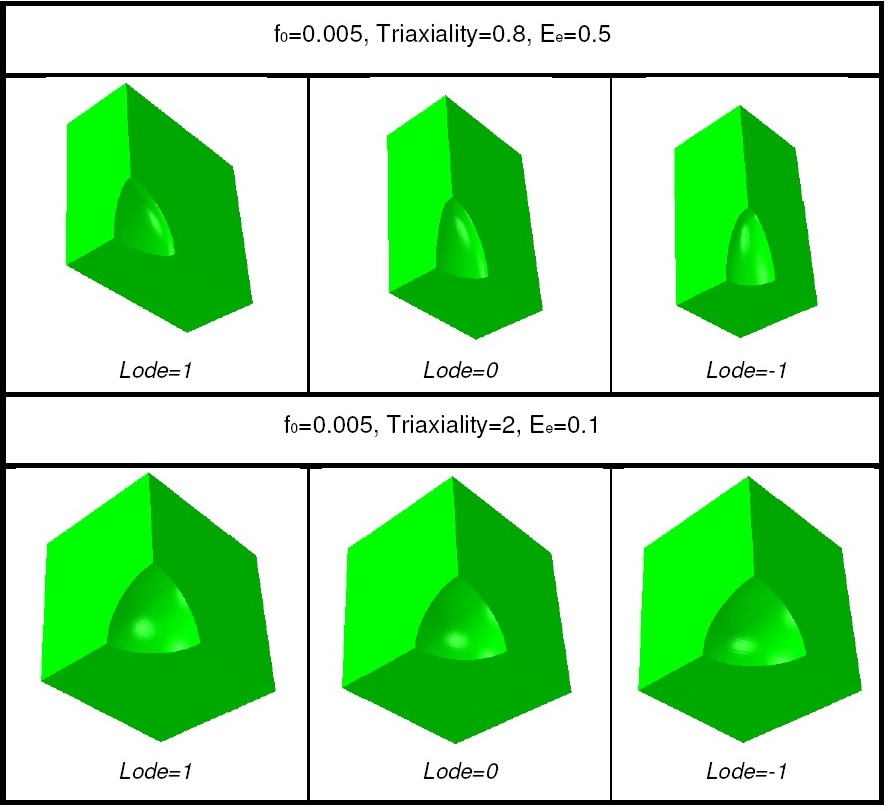
A modified Gurson model to account for the influence of the Lode parameter at high triaxialities
Deformation of the cavity in the J2 voided cell (RMV) for effective strain Ee = 0.5 and triaxiality T = 0.8, and for effective strain Ee = 0.1 and triaxiality T = 2 when L = 1, 0 and -1 respectively. Initial void volumen fraction f0 = 0.005.
A comparative study of the dynamic fragmentation of non-linear elastic and elasto-plastic rings: the roles of stored elastic energy and plastic dissipation
Comparative analysis of the processes of dynamic necking and fragmentation in elasto-plastic and hyperelastic ductile rings subjected to rapid radial expansion. The elasto-plastic material and the hyperelastic material are modelled with constitutive equations which provide nearly the same stress-strain response during monotonic uniaxial tensile loading, and fracture is assumed to occur at the same level of deformation energy. Finite element computations have revealed that the number of necks nucleated in the elasto-plastic and hyperelastic rings is similar, but the proportion of necks that develop into fracture sites is much greater for the hyperelastic rings than for the elasto-plastic ones.

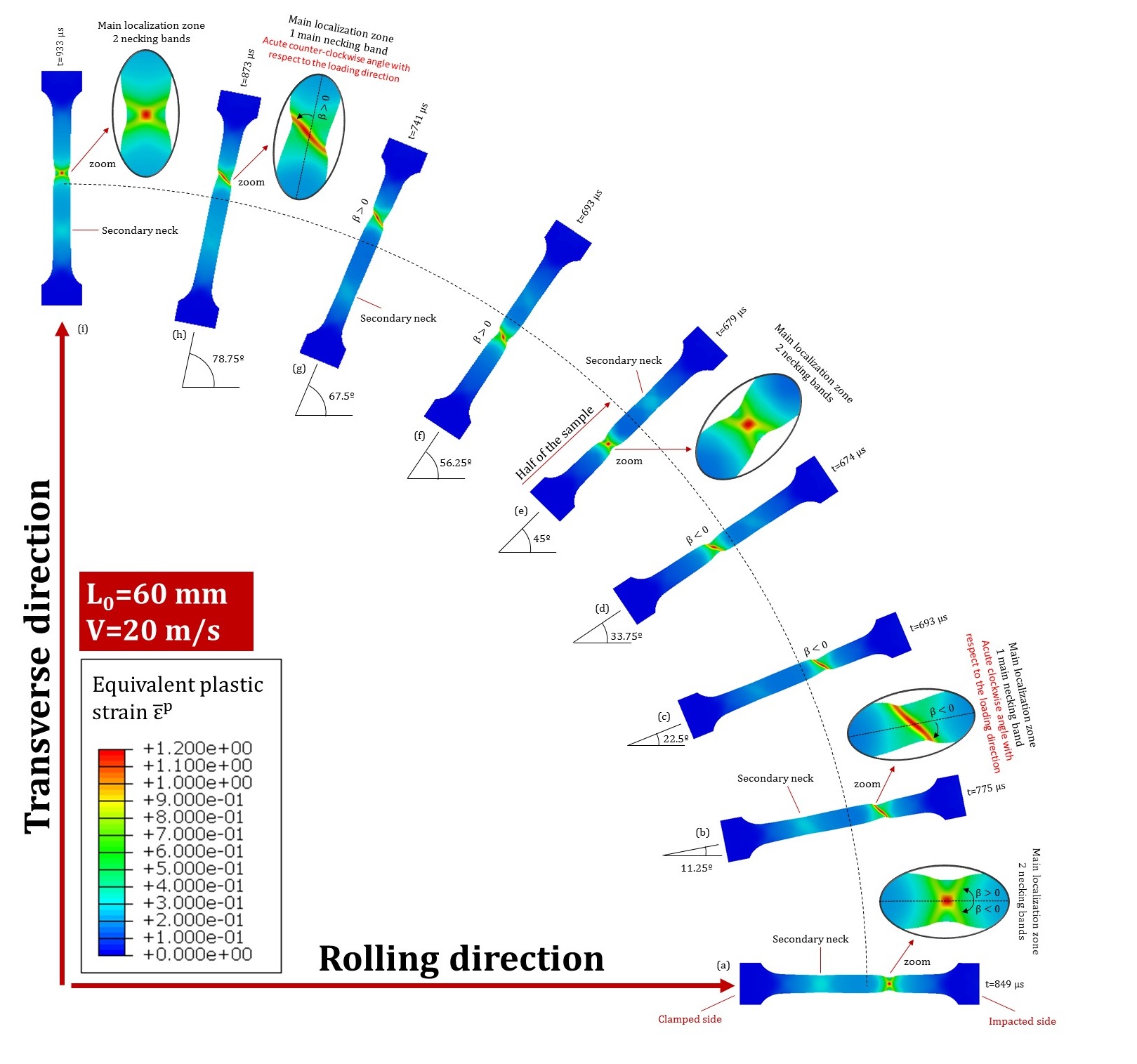
The combined effect of plastic orthotropy and tension-compression asymmetry on the development of necking instabilities in flat tensile specimens subjected to dynamic loading
Contours of equivalent plastic strain for different specimen orientations. It is observed that the orientation of the specimen with respect to the in-plane symmetry axes of the material plays a key role in the location and characteristics of the neck(s) formed in the sample.
Effects of plastic anisotropy on localization in orthotropic materials: new explicit expressions for the orientation of localization bands in flat specimens subjected to uniaxial tension
We have investigated the effect of the loading orientation on the inception of localization bands in orthotropic metallic sheets subjected to uniaxial tension. For that purpose, specimens with the loading axis oriented at different angles 0º ≤ θ ≤ 90º to the rolling direction of the sheet were investigated. The figure shows predicted values of the necking angles according to Cazacu (2018) criterion as a function of the specimen orientation with respect to the rolling direction for 2090-T3 Al alloy.
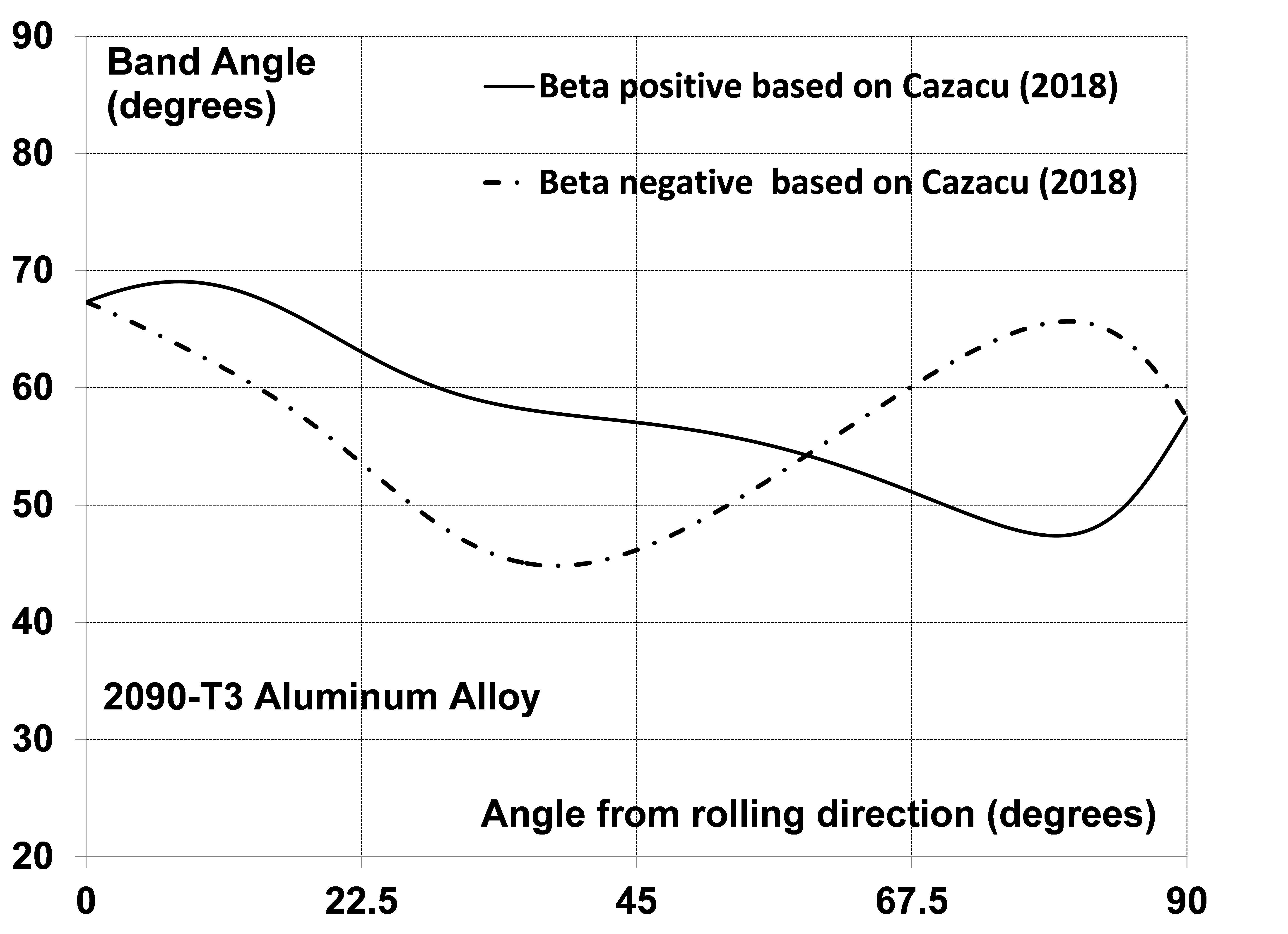
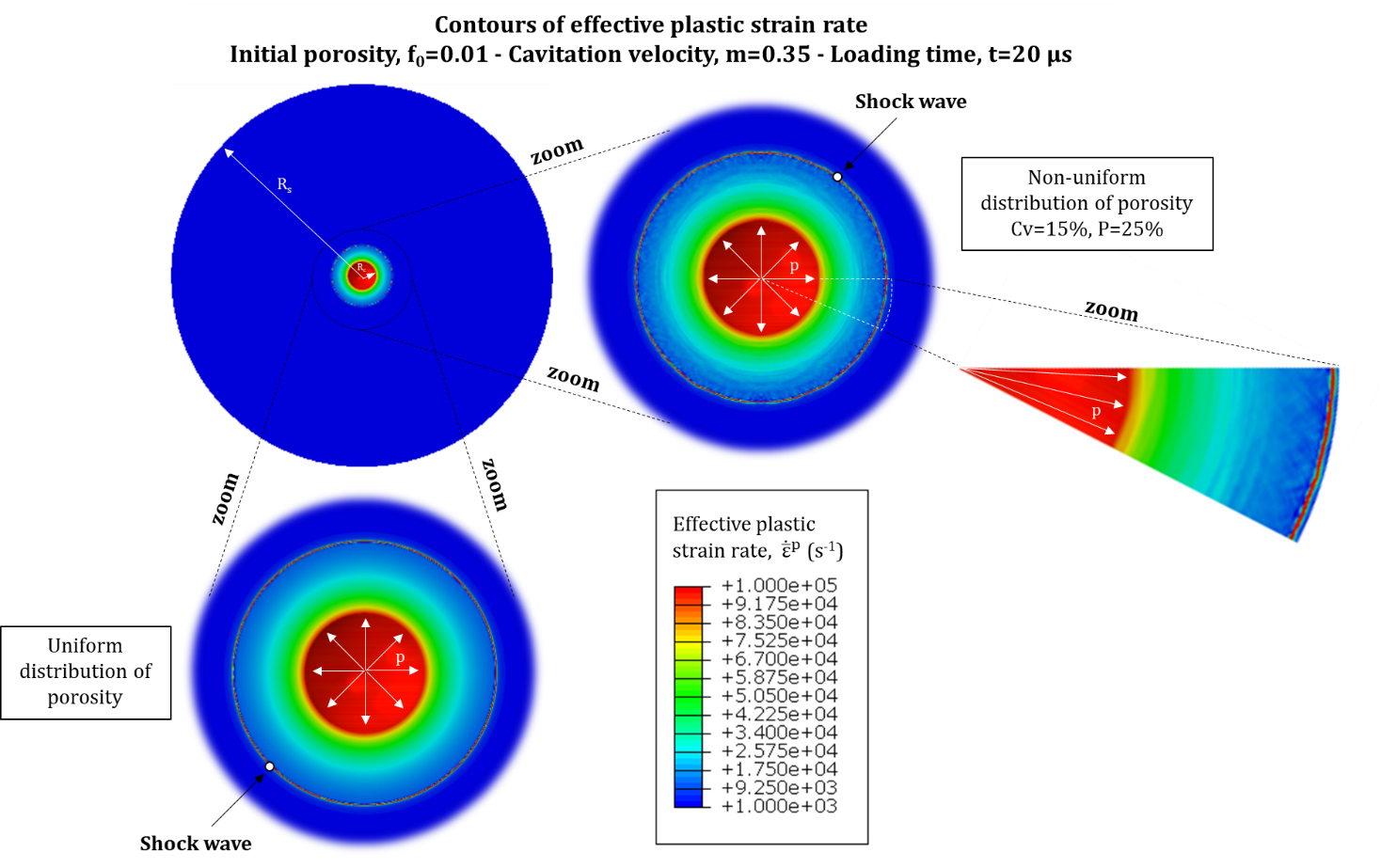
Dynamic spherical cavity expansion in Gurson materials with uniform and non-uniform distributions of porosity
We have investigated both theoretically and using finite elements the elastoplastic field induced by a pressurized spherical cavity expanding dynamically in an infinite medium modelled using the Gurson–Tvergaard–Needleman porous plasticity approach. The theoretical model, which assumes that the porosity is uniformly distributed in the material and the cavitation fields are self-similar, incorporates artificial viscous stresses into the original formulation of Cohen and Durban (2013b) to capture the shock waves that emerge at high cavitation velocities. The finite element calculations, performed in ABAQUS/Explicit (2013) using the Arbitrary Lagrangian Eulerian adaptive meshing available in the code, simulate the cavity expansion process in materials with uniform and non-uniform distributions of porosity.
The effect of tension-compression asymmetry on the formation of dynamic necking instabilities under plane strain stretching
We have brought to light the effect of tension-compression asymmetry in flow stresses on the formation of dynamic necking instabilities in isotropic metallic plates subjected to plane strain stretching. This figure shows the energy dissipated when necking occurs for different cell sizes (L0/h0) calculated using finite elements (FEM) and linear stability analysis (LSA) for material 1 (von Mises material), material 2 (uniaxial tensile yield stress greater than uniaxial compressive yield stress) and material 3 (uniaxial tensile yield stress lower than uniaxial compressive yield stress). It is observed that the energy dissipated when ecking occurs are significantly greater for the material 3. We have demonstrated that such behaviour is due to the larger plastic dissipation undergone, under plane strain stretching, by this material.
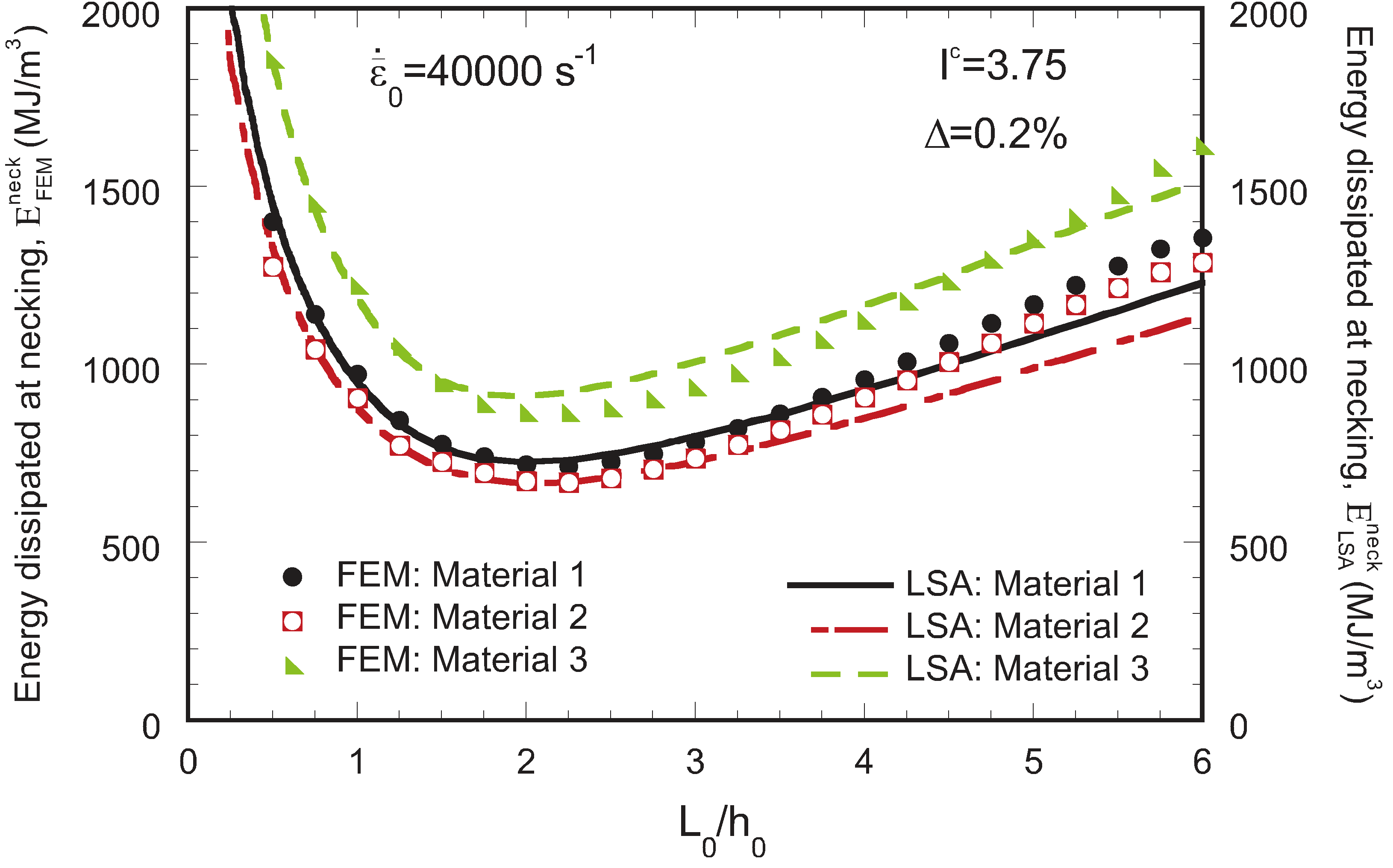
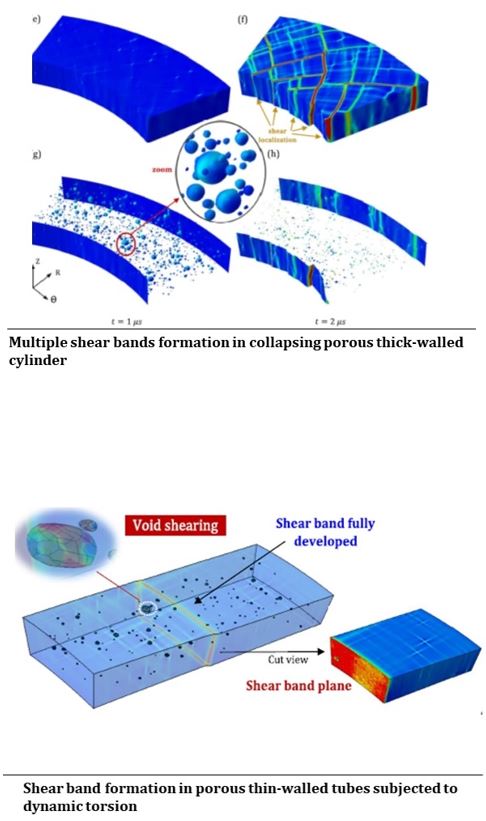
Effect of porous microstructure on dynamic shear localization
We have performed 3D finite element analysis of the collapsing thick-walled cylinders and dynamic torsion of thin-walled tubes in order to investigate the effect of porous microstructure on the formation of adiabatic shear bands. The distinctive feature of this work is that we have followed the methodology developed by Marvi-Mashhadi et al. (2021) to incorporate into the finite element calculations the actual porous microstructure of 4 different additively manufactured materials –aluminium alloy AlSi10Mg, stainless steel 316L, titanium alloy Ti6Al4V and Inconel 718– for which the initial void volume fraction varies between 0.001% and 2%, and the pores size ranges from ≈6 μm to ≈110 μm. The mechanical behavior of the material is modeled as elastic-plastic, with yielding described by the von Mises criterion, an associated flow rule and isotropic hardening/softening, being the flow stress dependent on strain, strain rate and temperature. It is observed that the increase of the void volume fraction shows a moderate effect on the shear localization process, the maximum diameter of the pores being the main microstructural feature affecting the shear localization process.


